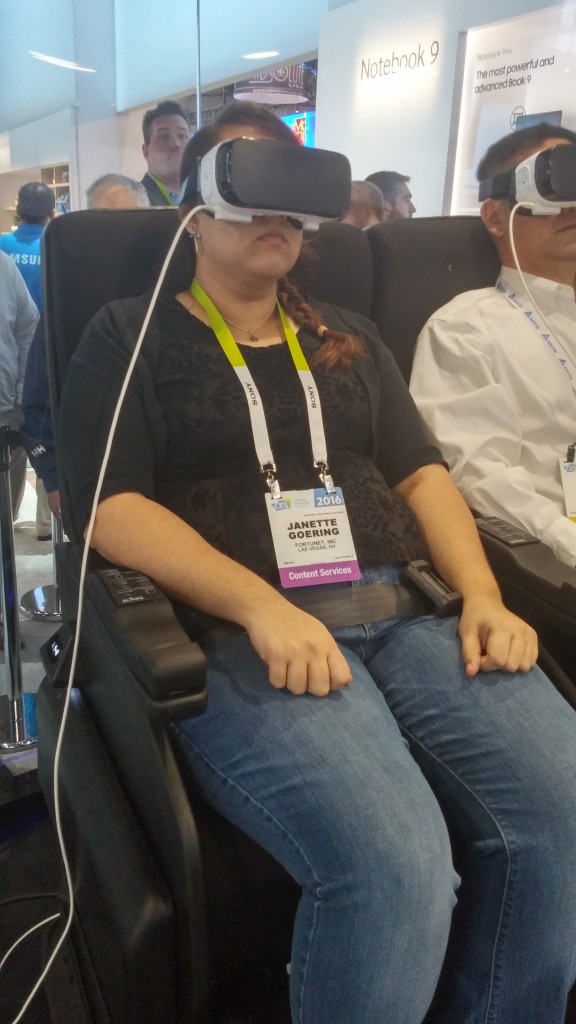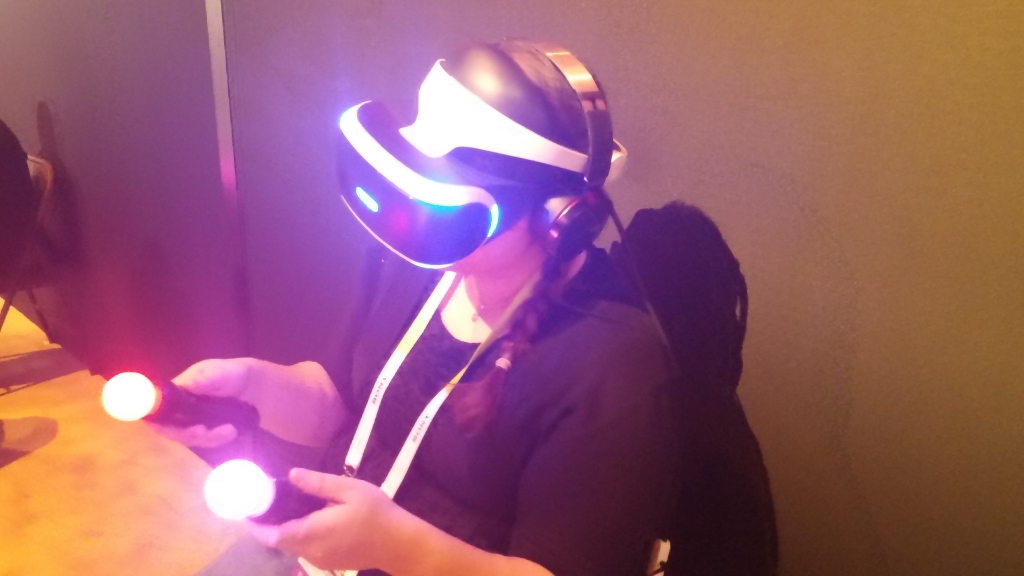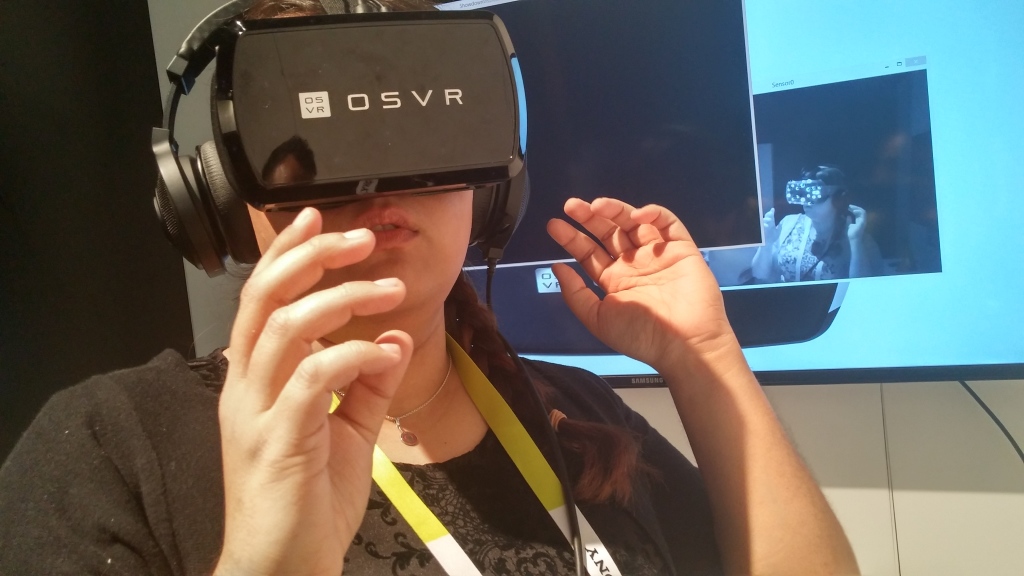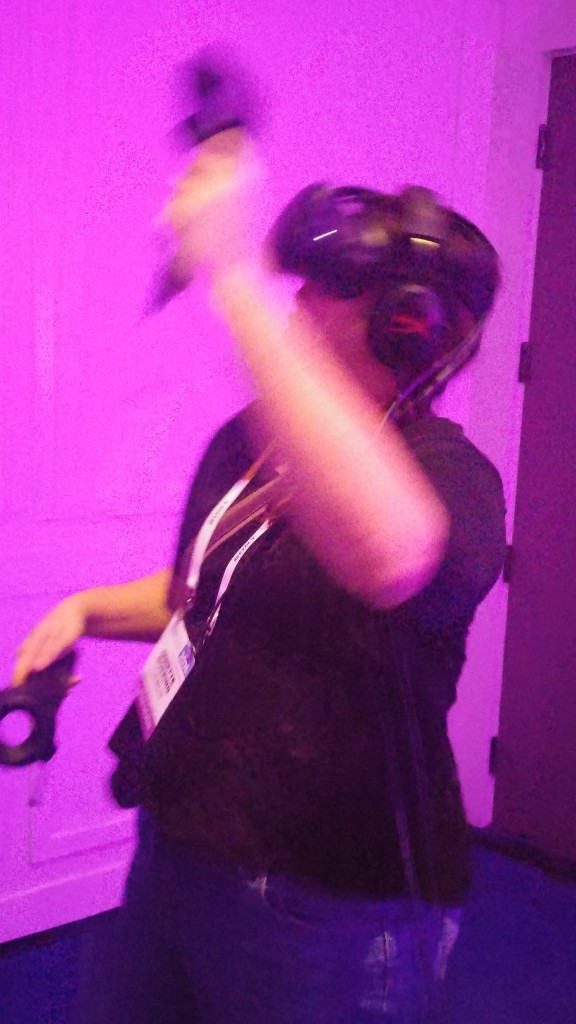VR is coming, but I promise it doesn’t suck this time!
Put it on my face. That’s all I could think as I wandered the halls of CES this year, staring at VR headset after headset. Put it on my face. I want to live there. If I can’t have a flying car, I want to at least pretend I’m flying like a superhero.
VR was everywhere at CES. Booth after booth had headsets. American companies, Japanese companies, Chinese companies, Korean companies. Phone companies, TV companies, speaker companies? If you went to CES thinking Oculus was the only game in town, you’re either uninformed or an idiot. I don’t think I was more than 100 feet away from a VR headset at any given point inside of the Las Vegas Convention Center. The only thing more prolific there this year were drones, and well… yeah.
With the retail Oculus already sold out on preorders for their official launch later this year at a $600+ entry fee, people are worried about whether prohibitive costs will keep VR from reaching the masses. I’ve got some opinions about that. One, when has any new technology EVER been cheap enough off the bat for the masses? The people who get in on the ground floor are the tech adopters, the ones with money to burn and a love of gadgets. When the Playstation 3 first launched, it was $599, and was still one of the cheaper blu ray players available at the time. Other non-gaming consoles players were hovering around a grand. DVDs before that were insanely priced at the start, as were VHSs, not to mention flat screen TVs, widescreen TVs, color TVs, etc. Calm down, I think it’ll get reasonable before too long. Two, I refuse to believe that those who want and can afford a full up retail Oculus kit are actually blinking at the price. It takes a high end PC to run, and those with the rigs powerful enough to support the headset have probably spent 2-4 times that just putting their towers together before monitors, mice, keyboards, etc. And three, Oculus is far from being the only game in town. And far from being the best at it as far as I’m concerned. You want in on VR before the end of the year, you’ve got options. You want in for cheap? You might not have as much functionality, but you’ve got options. You want in for free? Google Cardboard.
Anyways, I got the chance to try on several headsets during my day at CES (not the Oculus though. I’ve tried on DK1 and DK2 and both made me motion sick, although I imagine full retail set is better. Also, the line was over two hours long and nope), so here’s some thoughts about the ones I got to try:
Samsung VR
PROS: Under $100, relatively lightweight, smartphone powered
CONS: Limited content, requires a Samsung phone, 3D felt lacking but might have just been the video I watched, uncomfortable if you wear glasses
Samsung’s smartphone-powered headset is probably one you’ve seen an ad or two about. Fairly low cost to purchase outright, it’s a shell with some lenses and a headstrap. The demo was of a surfing video, in seats that moved. Visual clarity was surprisingly good, given that it was just an S6 in the shell. Movement was quick and responsive, but lacked the 3D depth I’ve seen elsewhere. Not a terrible entry point but the demonstrators didn’t comment about it being compatible with any sort of games or usable with a computer. Had an adjustment wheel for fine focusing the image.
Playstation VR (aka Project Morpheus)
PROS: best ergonomics, PS4 compatible, feels weightless
CONS: No price announced, full experience requires PS4 Camera and PS Move controllers, no PC compatibility out of the box
The PSVR hands down is the most comfortable headset I put on that day. Instead of a head strap or two anchoring the headset to your face, it has a sort of crown that rests on your head. This gives the headset a feeling of weightlessness, and allows the screen itself to be adjusted for closeness to the face (very accommodating for glasses wearers). Also had a fine focus adjustment wheel. Given that Sony makes some pretty high quality TVs, the screens were great with minimal pixelization and decent 3d effects. I got to play Until Dawn: Rush of Blood, and it was a blast, forcing me to physically move around ingame. It does require the PS4 Camera and PS Move controllers, but the Move controllers are the same as the PS3 ones. Rumors are it’ll retail at under $400 for just the headset.
Creative Labs Blaster VR
PROS: works with any smartphone with the app, $50, super lightweight
CONS: About as basic as you can get, screen only as good as your phone is, again issues for glasses wearers
Why is a speaker and audio card company selling a VR headset shell? Because who doesn’t want some of that sweet, sweet VR money. This shell works with any smartphone that can download the app and fits inside. Lenses are real basic, minimal adjustment available. App implied games were available, and I could select things by aiming a cursor at it by moving my head at it. Like the Samsung VR, 3D felt lacking. But hey, you want in for cheap, this is a good start.
Razer/OSVR
PROS: from a dev standpoint just needs a Unity plugin, dev kit with camera is $300
CONS: Lenses way too close to the face
OSVR teamed up with Razer to get this thing out to the masses. The ergonomics are a huge issue with this one though; my eyelashes uncomfortably brushed against the lenses every time I blinked. Requires a camera to operate properly, but the kit comes with the camera. I was told they’re selling the dev kits at a loss and expect the retail version to be right at cost price wise. Strong screen refresh rate and low pixelization. Strong Oculus alternative. I was only shown a trailer for I want to say Cyberpunk 2077 but it looked pretty great. No word about a separate controller set.
HTC Vive
PROS: YOU CAN ACTUALLY MOVE AROUND
CONS: Going to be crazy expensive, best experience requires the full system with camera and controllers
The Vive is interesting in that you’ve got space to walk around. And oh boy did it utilize it. My demo was in three parts. The first was an sunken ship with fish and a whale swimming by. The second was a desert landscape where I had to shoot at a few cans and zombies. The last was a 3D light painting program. The screen once again, very good. Strong 3D. The ability to walk around made a huge difference. I could actually walk around the painting I was working on, giving it even more depth. The controllers are a little strange, but you get used to them. I got no word on the dev kit price, but heard the full set with camera and controllers would easily run $800-$1000. This isn’t cheap by any means, but that’s the price for better immersion.
And of course a variety of companies showing off headsets here and there. Phone based, headset direct from China, and everything inbetween.
If I had to pick favorites, PSVR is easily the most comfortable and might have the strongest launch lineup, with the Vive being the way to go for a PC headset. I find the use of the camera for several of the sets (as well as the Crystal Cove Oculus) interesting, because it means those headsets are trying also to add depth based on user movement. It’s one thing to look around and see all around and such. It’s another to feel like you tilting your head and ducking is actually doing something. PSVR and Vive were great at placing me in my environment that way, with the Vive utilizing the camera to also deal with me walking around. If we’re going for pure immersion, that’s what you’ll want.
I know VR seems like a dumb thing, but I’m so into it. It’s going to make horror media that much more terrifying. It’s going to allow me to be enveloped and reach new levels of immersion I could only dream of as a child. Price of entry might start off high, but I want to believe it will take off this time.












